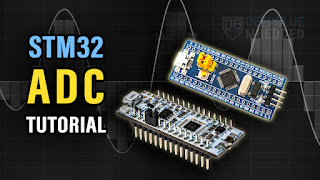How to wire a button to Arduino?
Wiring a button to an Arduino is a fundamental skill. Here’s a complete guide covering the wiring, the code, and the important concept of debouncing.
1. The Basic Circuit: Pull-Down Resistor
The most common and reliable way to wire a button is with a pull-down resistor. This configuration ensures the Arduino pin reads a definite LOW signal when the button is not pressed, avoiding a "floating" pin.
Components Needed:
Arduino board (Uno, Nano, etc.)
10k Ohm resistor (Brown-Black-Orange)
Wiring Diagram:
Arduino 5V ----> Pushbutton Pin 1
Pushbutton Pin 2 ----> 10k Resistor ----> Arduino GND
|
˅
Arduino Digital Pin (e.g., 2)How it works:
When the button is NOT pressed, the input pin is connected to
GNDthrough the resistor. This pulls it down toLOW(0V).When the button IS pressed, a path is created from
5Vto the input pin. Since this path has much lower resistance than the 10k resistor to ground, the pin readsHIGH(~5V).
2. The Code (Basic Example)
Here is a simple sketch to read the button and turn on the Arduino's built-in LED (on pin 13) when pressed.
// Define pin numbers for clarity const int buttonPin = 2; // The pin the button is connected to const int ledPin = 13; // The built-in LED pin // Variable to store the button's state int buttonState = 0; void setup() { // Initialize the LED pin as an output pinMode(ledPin, OUTPUT); // Initialize the button pin as an input pinMode(buttonPin, INPUT); } void loop() { // Read the state of the button value and store it buttonState = digitalRead(buttonPin); // Check if the button is pressed (is HIGH) if (buttonState == HIGH) { // Turn LED ON digitalWrite(ledPin, HIGH); } else { // Turn LED OFF digitalWrite(ledPin, LOW); } }
3. The Concept of "Bouncing" and How to Fix It
Mechanical buttons don't make a clean contact instantly. They physically bounce open and closed for a few milliseconds before settling. This can cause the Arduino to read multiple rapid presses for a single press.
Solution: Debouncing
We can fix this in software by adding a short delay after the first press is detected, ignoring any subsequent changes.
Improved Code with Debouncing:
const int buttonPin = 2; const int ledPin = 13; int ledState = LOW; // current state of the LED int buttonState; // current reading from the button int lastButtonState = LOW; // previous reading from the button // Variables for debouncing unsigned long lastDebounceTime = 0; unsigned long debounceDelay = 50; // debounce time in milliseconds void setup() { pinMode(buttonPin, INPUT); pinMode(ledPin, OUTPUT); digitalWrite(ledPin, ledState); // set initial LED state } void loop() { // Read the button's state int reading = digitalRead(buttonPin); // Check if the reading is different from the last stable state (a change happened) if (reading != lastButtonState) { // reset the debouncing timer lastDebounceTime = millis(); } // Check if the debounce delay has passed if ((millis() - lastDebounceTime) > debounceDelay) { // Whatever the reading is at, it's now been stable for longer than the debounce delay // If the button state has changed from the stored stable state: if (reading != buttonState) { buttonState = reading; // Only toggle the LED if the new button state is HIGH (pressed) if (buttonState == HIGH) { ledState = !ledState; // Flip the LED state digitalWrite(ledPin, ledState); } } } // Save the current reading for the next loop iteration lastButtonState = reading; }
This code toggles the LED on and off with each press and is much more reliable.
4. Alternative Wiring: Internal Pull-Up Resistor
Arduino microcontrollers have built-in pull-up resistors you can enable in software. This simplifies the wiring.
Wiring Diagram (Simpler):
Arduino GND ----> Pushbutton Pin 1 Pushbutton Pin 2 ----> Arduino Digital Pin (e.g., 2)
No external resistor is needed.
How it works:
You enable the internal resistor in
setup()withpinMode(pin, INPUT_PULLUP).The logic is INVERTED:
Not pressed: The pin is pulled
HIGHby the internal resistor.Pressed: The pin is connected to
GND, readingLOW.
Code for Internal Pull-Up:
const int buttonPin = 2; const int ledPin = 13; void setup() { pinMode(buttonPin, INPUT_PULLUP); // Enable the internal pull-up resistor pinMode(ledPin, OUTPUT); } void loop() { // Read the button. Notice the logic is now inverted. if (digitalRead(buttonPin) == LOW) { // Button is PRESSED (pin is LOW) digitalWrite(ledPin, HIGH); } else { // Button is NOT pressed (pin is HIGH) digitalWrite(ledPin, LOW); } }
Summary
| Method | Wiring Complexity | Pin Logic (Not Pressed) | Pin Logic (Pressed) | Pros & Cons |
|---|---|---|---|---|
| Pull-Down Resistor | Requires a 10k resistor | LOW | HIGH | Pro: Standard, clear logic. Con: Needs an extra component. |
| Internal Pull-Up | Just wire to GND and pin | HIGH | LOW | Pro: Simpler wiring. Con: Logic is inverted, which can be confusing. |
For most beginners, starting with the pull-down resistor method is best because the logic (HIGH = pressed) is more intuitive. The internal pull-up method is excellent for saving space and components once you understand the inverted logic. Always remember to debounce your buttons in software for reliable operation.




评论
发表评论